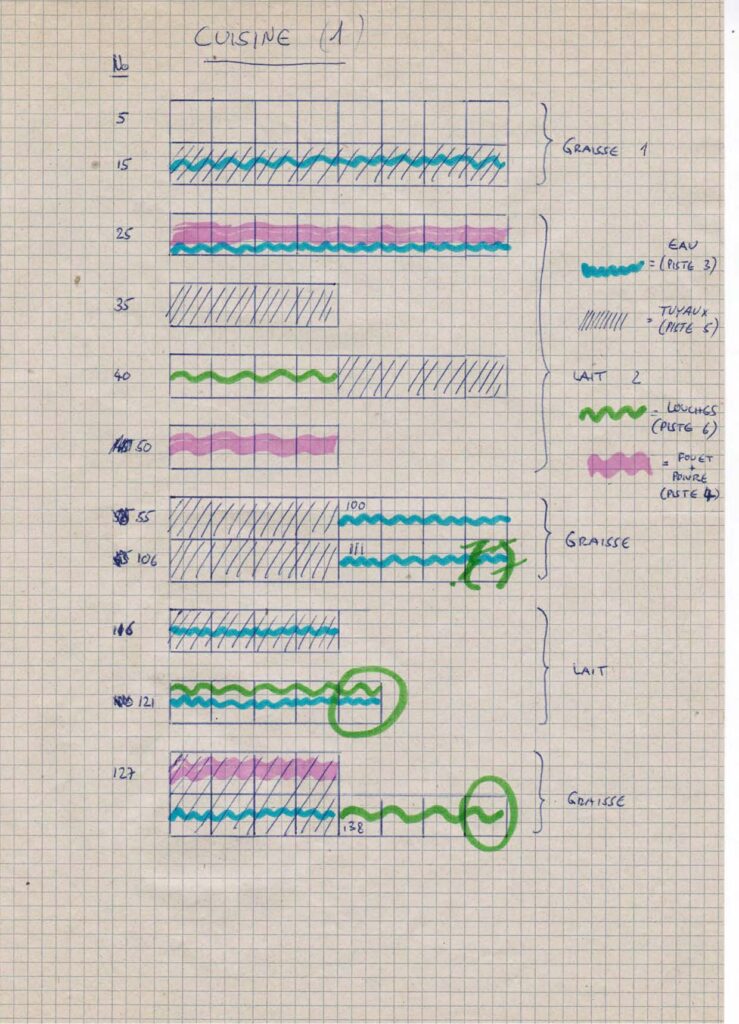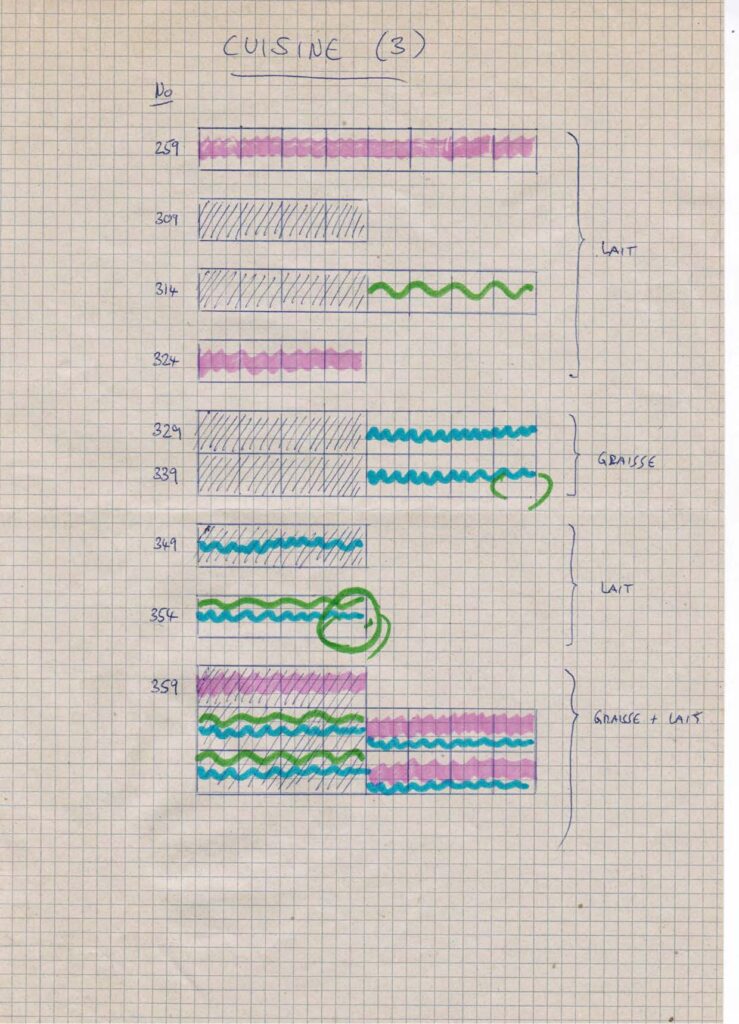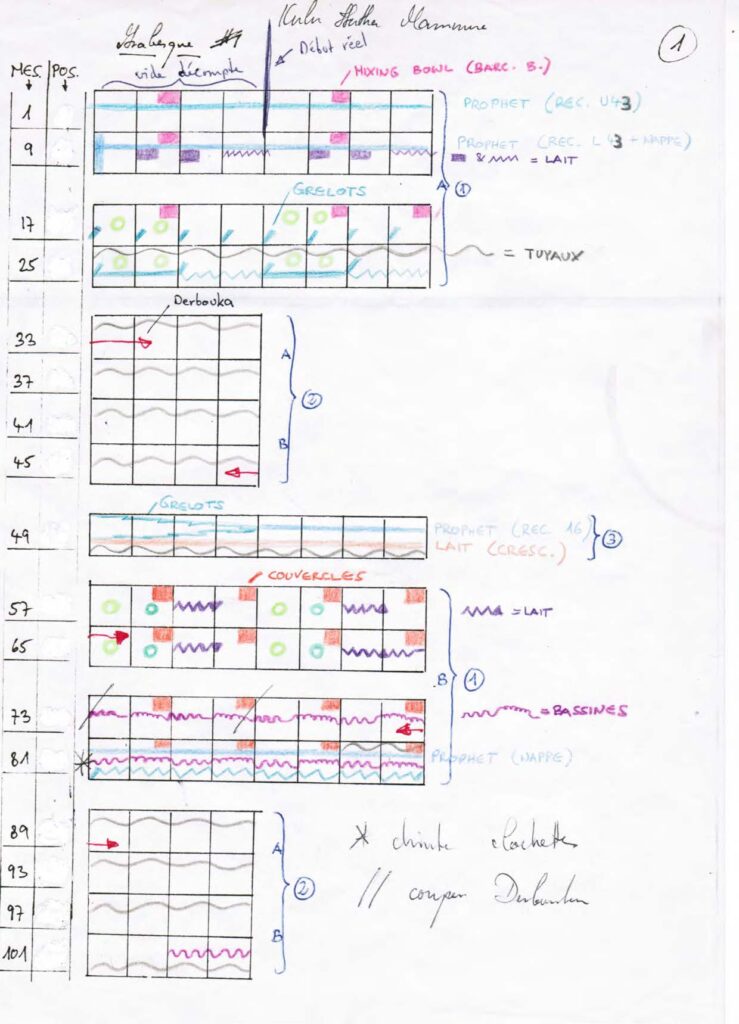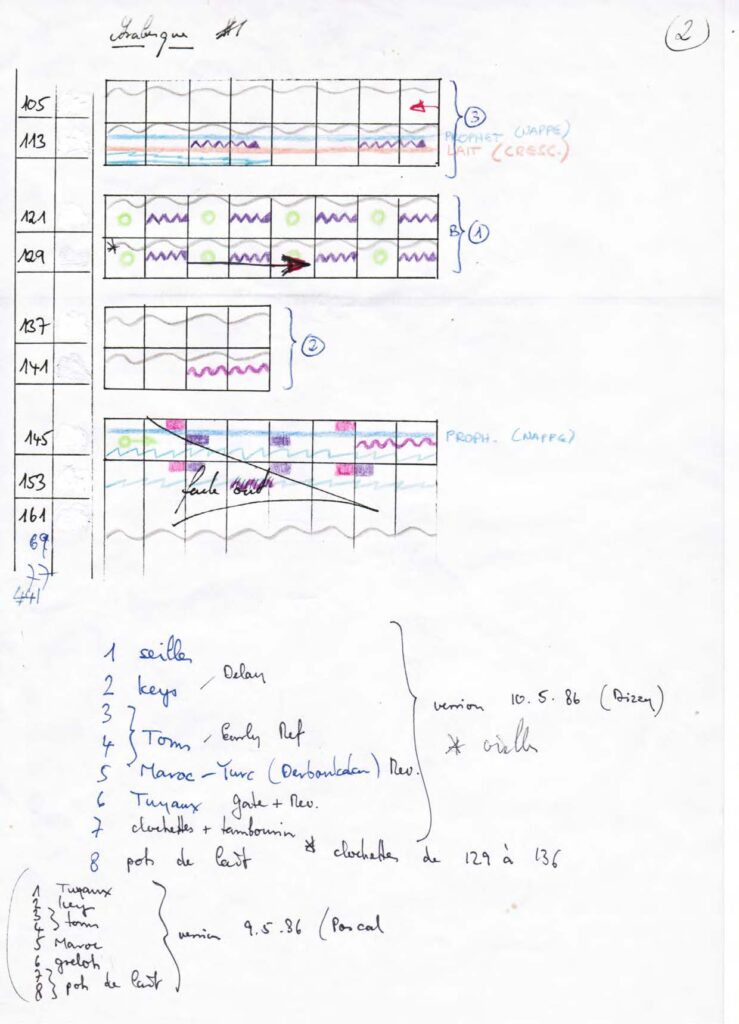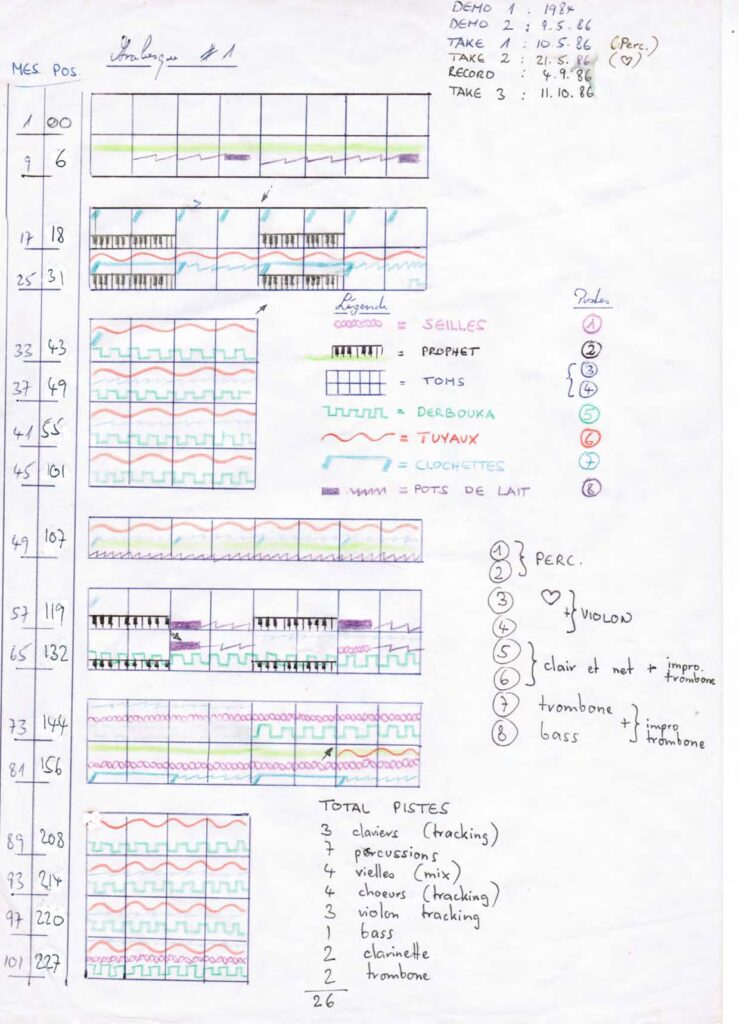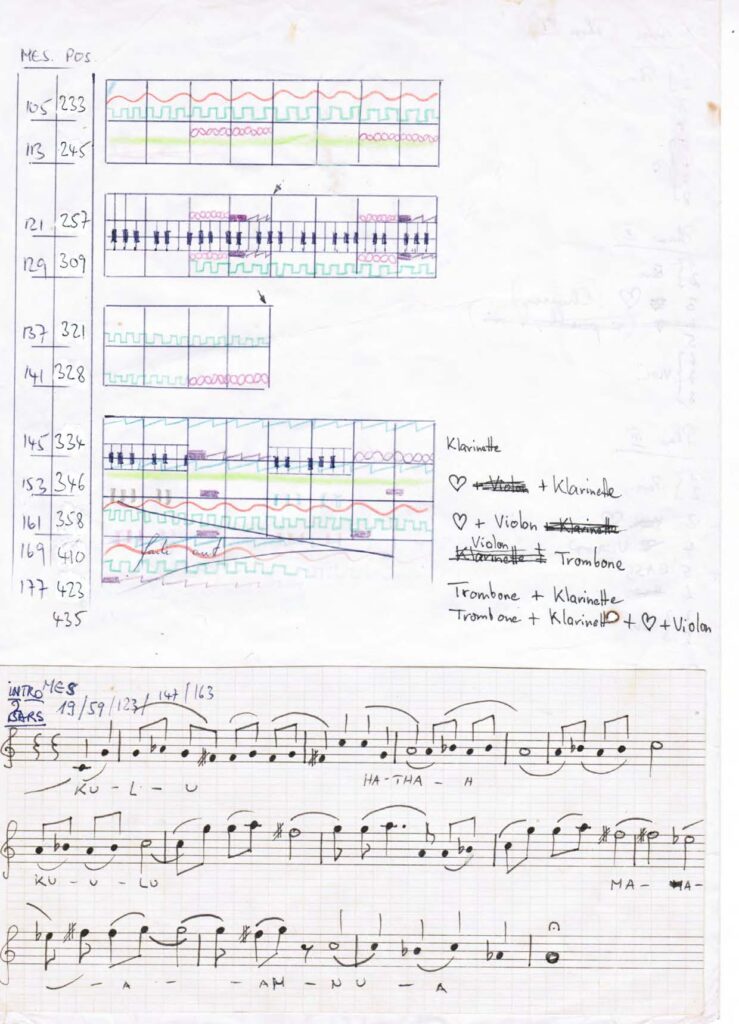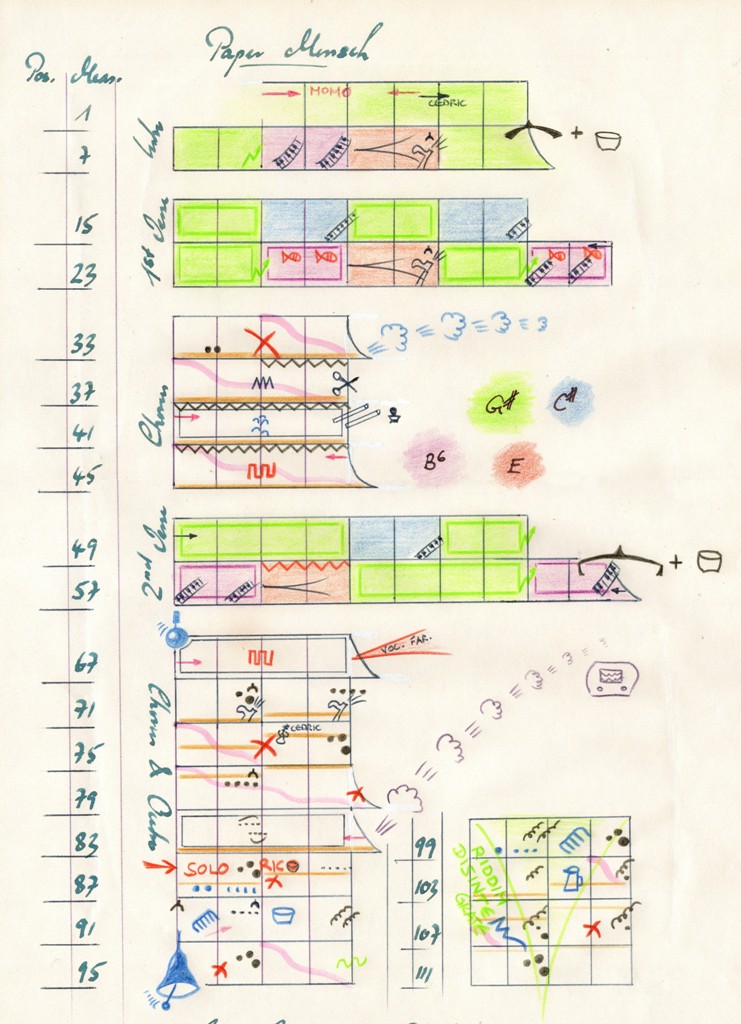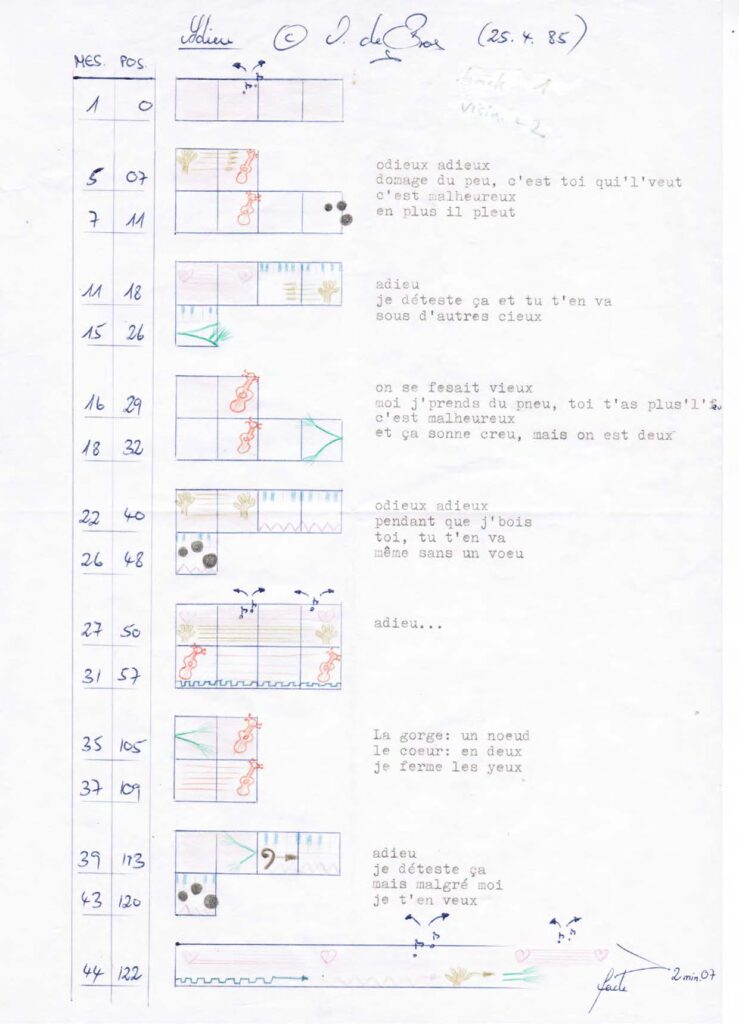Often wondering how come some people don’t have to “learn music” with common practices and/or teachers and institutions with their humpty methods and didactics (*), but just “know” how they can express themselves, and that – for them – the best way is “with music” (making sound happen), I came across such method with a tactical guide-line and thus making friends jump over their own shadow!…
(* the ‘learn’_part in music is not understood as a rules-based (…!…) dithyrambic ‘mathematics’ but rather as ‘maieutics‘)…
Detecting a feel for groove in the late chef Pascal Cuche (he didn’t “know the mecanics” of music and/or rythm) triggered the cradle of my system (see below). Pascal initially just went with the flow hitting his pots and pans and he was gorgeously grooving! Hence, wanting to share his company outside the kitchen (where I helped out wintermonths for 2 years), I “made him make music”.
Listen to this cool piece of “non music” played by a “nono-musician” who became a genuine player after this recording!
(I overdubbed some santur, didgerido and other non-kitchen instruments for this year’s re-release of the original 1981 recording)…
In order to ‘organise’ something like a piece with a structure I developed various “partitions” (sheet music), that show logically and formally how a lot of this “unformal music” works, how it is possible to make an unknown language become familiar and record ‘something structured’ using – as instruments – what we had on the spot like pots and pans and other kitchen utensils (see the great joy of children all ages)…
Hereafter you find the ‘sheet music’ “Cuisine“: on the left you have the position of the taperecorder’s counter, so we could e.g. say: drop in the plastic tubes (“tuyaux”) at “15” (seconds), meaning, the musician had to count 8 bars before he’s setting in with the tubes. On other ‘partitions’, I’d label the left column with the taperecorder’s counter AND the number of bars, such as in “Kulu” (see below/after this “Cuisine”-score)… etc.
Visually/graphically any ‘instrument’ or object can be (numerically) followed/traced/tracked, making the “music” appear structured, even if awesome in sound…
…and most of all: leaving the active musician pretty free to find her/his own formula/pattern, i.e. leaving total creative liberty to ‘be one self’, just suggesting to
play from here to there…
(organise sound into music)…
The reference is just TIMING, hence counting and FEELING (to make things groove / be on time)…

